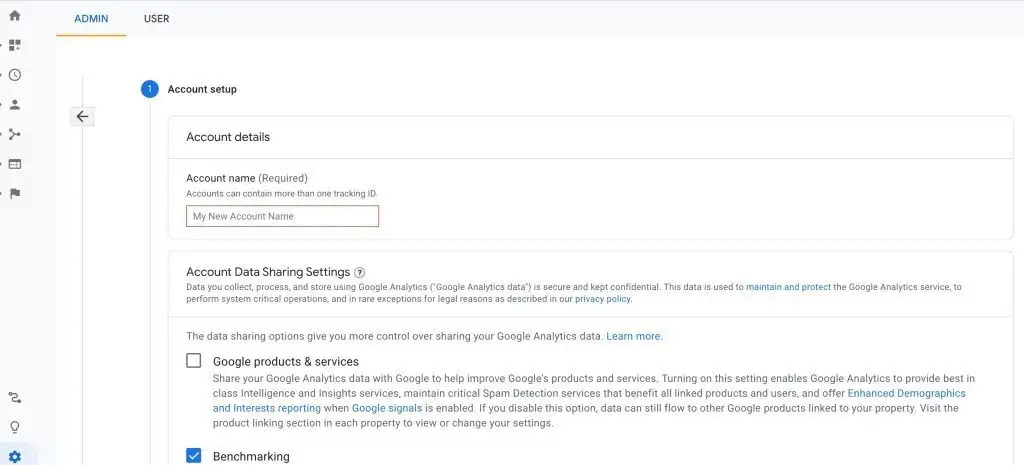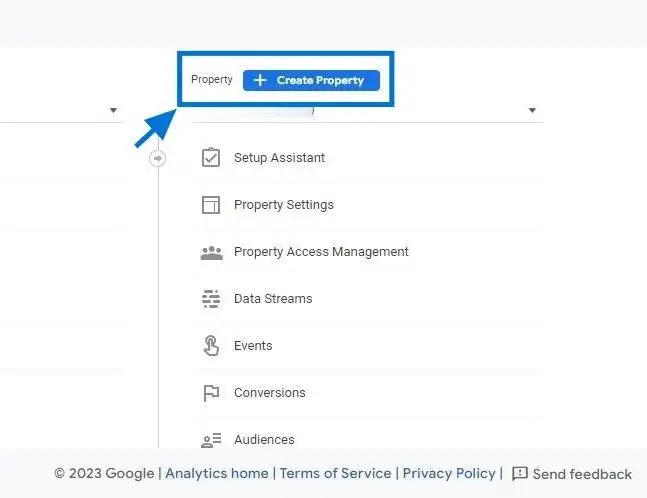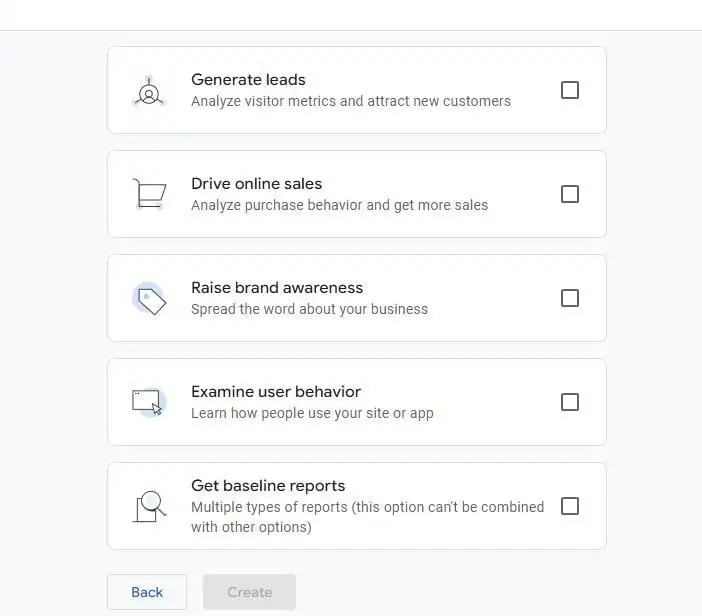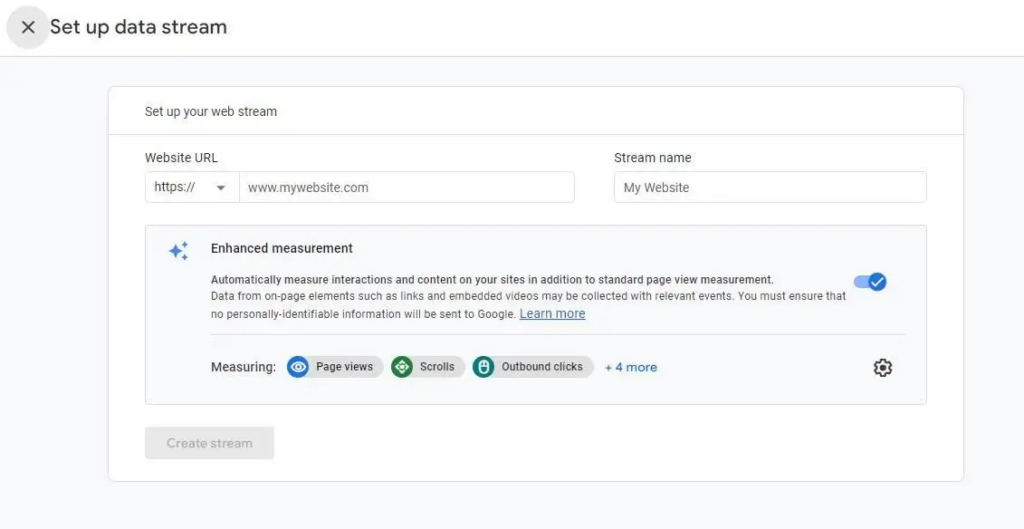How to Use Google Analytics for Social Media Tracking
By Alex Carter on September 25, 2024
Google Analytics 4 (GA4) helps businesses track the impact of social media on website performance by providing data on user behavior, engagement, and conversions. It allows marketers to analyze audience demographics, traffic sources, and user actions to optimize social media strategies and improve results. However, GA4 has limitations, including difficulties with multi-platform attribution, delayed data processing, and complex event setups, which can affect the accuracy of social media tracking and decision-making.
What is Google Analytics 4 (GA4)?
Google Analytics 4 (GA4) is a free analytics platform designed to provide in-depth insights into your website’s traffic, user engagement, and visitor behavior, including how users find your site through social media channels. For beginners in SEO, GA4 is an essential tool for analyzing how visitors interact with your website.
Benefits of Using Google Analytics 4 for Social Media Tracking
Track Conversions More Effectively
Traditional social media analytics often fall short when it comes to tracking conversions. This is where GA4 excels. By integrating it into your social media reporting, you can gain clearer insights into how your content drives valuable actions. Exploring social media analytics tools alongside GA4 can further enhance your ability to measure engagement, audience behavior, and conversion trends effectively.
For example, social media teams aiming to manage customer acquisition with audience engagement can use GA4 to monitor how many users download resources, sign up for webinars, or complete other conversion goals.
Key Benefits:
- Monitor content performance beyond likes and shares;
- Track downloads, sign-ups, and other conversions;
- Use tracking codes and real-time reports to assess results.
For small businesses, this level of insight is crucial to understanding which content generates the most engagement and conversions.
Gain Deeper Insights into Your Audience
While likes and comments provide surface-level engagement metrics, GA4 reveals how your audience interacts with your website after leaving social platforms. This helps determine which content actually drives meaningful actions like purchases or sign-ups.
Many marketers overlook posts with low engagement rates, assuming they underperform. However, GA4 often shows that posts with fewer likes can still lead to a significant number of conversions.
Key Benefits:
- Identify high-converting posts, even with minimal social engagement;
- Understand audience behavior beyond social media platforms;
- Optimize future content based on user actions, not just vanity metrics.
Identify Your Top Traffic Sources
One of GA4’s most notable features is its ability to pinpoint where your website traffic originates—whether from organic search, social media, or referral links. This allows marketers to track the impact of social campaigns on overall site performance.
Knowing which social networks drive the most traffic enables you to tailor content for specific platforms. For example, if LinkedIn drives more content downloads, focus your efforts there. Or, if Instagram leads to more sign-ups, emphasize CTAs in your posts.
Key Benefits:
- See which social networks bring in the most traffic;
- Adjust your posting schedule based on real-time performance data;
- Optimize content strategies for each social platform.
Prove Social Media ROI
Demonstrating return on investment (ROI) is essential for social media marketers. GA4 makes it easier to connect social media efforts to business outcomes by tracking leads, conversions, and revenue generated from specific platforms.
Using acquisition reports, you can show leadership how social media campaigns directly contribute to company goals, making a strong case for continued or increased investment in social media strategies.
Key Benefits:
- Measure social media’s impact on business goals;
- Highlight high-performing campaigns with detailed reports;
- Strengthen pitches for more social media resources and budget;
- Maximize Your Social Media Strategy with GA4
By integrating Google Analytics 4 into your social media tracking, you gain comprehensive insights that go beyond basic engagement metrics. From tracking conversions and understanding audience behavior to identifying top traffic sources and proving ROI, GA4 equips marketers with data to optimize strategies and drive business growth.
Why Tracking Social Media Traffic in Google Analytics 4 (GA4) Is Important
For businesses active on social media, using Google Analytics 4 (GA4) to track social media traffic is essential for understanding how these channels impact website performance. GA4 provides data that help refine strategies, improve engagement, and increase conversions.
Understanding the types of sales funnels can also help you see where each interaction fits in the customer journey before the final conversion. GA4’s event-based tracking allows you to measure specific actions users take after arriving from social media, such as downloads, form submissions, or product views. By setting up custom events and conversion goals, you can better evaluate which platforms and content types drive the most valuable interactions.
Here’s why it matters:
Identify Effective Social Platforms
GA4 shows which social media platforms drive the most traffic to your website and highlights underperforming channels. This information helps focus efforts on high-performing platforms and make data-backed adjustments where needed.
If Facebook consistently drives traffic but Twitter underperforms, it makes sense to allocate more resources to Facebook while reassessing your Twitter strategy.
Evaluate Visitor Engagement
GA4 tracks how social media visitors interact with your website, providing details like session duration, pages viewed, and actions completed. This data helps determine if your content meets user expectations.
If users leave your site quickly without taking action, such as filling out forms or making purchases, it may indicate that your content isn’t aligned with their interests and requires changes.
Compare New vs. Returning Visitors
GA4 allows you to compare the number of new visitors against returning ones, offering insight into how well your social media strategy builds audience loyalty.
- High New Visitor Rate: Consider strategies to encourage repeat visits, like exclusive offers or follow-up content;
- Strong Returning Visitor Rate: Indicates your content holds user interest and encourages ongoing engagement.
Track Conversions from Social Media Traffic
GA4 helps you track key actions taken by social media visitors, such as form submissions, purchases, or resource downloads. This data clarifies how social campaigns contribute to business goals.
Questions GA4 Can Answer:
- Are social media users completing purchases or signing up for newsletters?
- Which posts or campaigns result in the most conversions?
- Are users engaging with important on-site elements, like videos or product pages?
Using GA4 for social media tracking provides data that helps optimize strategies, improve user engagement, and drive better results.
Setting Up Google Analytics 4 for Social Media Performance Tracking
To effectively track how social media impacts your website’s performance, setting up Google Analytics 4 (GA4) is essential. Follow these steps to get started:
Step 1: Create a Google Analytics Account
- Visit Google Analytics and click “Start Measuring”;
- In the Account Setup section, enter your Account Name;

- Configure the following settings:
- Property Name (usually your website or business name);
- Time Zone;
- Currency.
- Enable “Demographics” and “Interest Reports” for deeper audience insights;
- Provide your website details when prompted;
- Review and accept the Data Processing Terms and the Measurement Controller–Controller Data Protection Terms for GDPR compliance;
- Click “Create” to finalize your account setup.
Step 2: Set Up a GA4 Property Data Stream
- In your Google Analytics account, go to Admin (bottom-left corner);
- Under the Property section, click “Create Property”;

- Fill in the required details:
- Property Name;
- Time Zone;
- Currency.
- Select your Industry Category and specify your Business Size;
- Choose Measurement Goals that align with your objectives (e.g., lead generation, e-commerce sales);

- Choose where GA4 will collect data from:
- Web;
- Android App;
- iOS App.
Note: If you manage a website and mobile apps, create separate data streams for each platform and link them for unified reporting.
Step 3: Complete the Data Stream Setup
- Select “Web” if you’re tracking website traffic;
- Enter your Website URL and assign a Stream Name;
- Click “Create Stream” to finish the setup.

Your GA4 property is now configured to track social media traffic and monitor user engagement.
Essential Metrics to Track in Google Analytics
When creating social reports and analyzing traffic, focus on these essential Google Analytics metrics to effectively monitor content performance and conversions.
User Attributes
User attribute metrics provide detailed insights into your website visitors. This data includes the number of visitors over a specific period, their geographic location, and demographic details such as gender and language.
For social media marketers, these metrics reveal who interacted with social posts and subsequently visited the website.
To access user attributes in Google Analytics:
- Go to your Google Analytics dashboard;
- Go to Reports;
- Open the User dropdown in the left-hand menu and click on User attributes.
This section offers an overview of user metrics, such as real-time active users and audience demographics. For more detailed data, explore Demographic details or Audiences, which provide detailed graphs and insights into user behavior.
Acquisition
Tracking acquisition metrics helps you understand how users find your site. GA4 divides this data into User Acquisition and Traffic Acquisition:
- User Acquisition shows how many new users visited your site;
- Traffic Acquisition focuses on the number of sessions initiated.
Key acquisition sources include:
- Direct: Users who enter your URL directly;
- Organic: Users from unpaid sources, like search engines or social platforms;
- Paid: Visitors from paid ads, such as Google Ads or social media ads;
- Referral: Users directed from external sites, like blogs or news articles;
- Email: Traffic from email campaigns.
To find acquisition data:
- Go to the Business objectives section in GA4;
- Under the Leads dropdown, select User acquisition or Traffic acquisition.
User Acquisition shows total users, new vs. returning users, and average engagement time per user. Traffic Acquisition focuses on sessions, engagement rates, and events per session—broken down by acquisition channels.
Engagement
Engagement metrics reveal how users interact with your site. One core metric is the number of sessions, which indicates how long visitors remain on your site or specific pages. A session begins when a user views a page or screen or opens your app and ends after 30 minutes of inactivity.
Another useful engagement metric is Pages and Screens, which shows which pages users visited and engaged with the most. This is particularly valuable when analyzing the success of specific landing pages or campaigns.
Conversions
Conversions are one of the most valuable metrics in Google Analytics, as they directly measure how well your content drives desired user actions.
With GA4, Google introduced Key Events, allowing businesses to track specific actions that matter most. A key event could be scrolling 90% of a landing page or clicking a call-to-action button. You can customize these key events to align with your business goals.
Conversions, however, go a step further by measuring actions across both Google Ads and Google Analytics. These include significant actions like downloading content, signing up for newsletters, or completing a purchase—key indicators of successful user engagement.
Essential Social Media Insights to Track in Google Analytics
Google Analytics offers valuable insights into how social media impacts website performance. Here are four key social media metrics to monitor for a clearer understanding of audience behavior, engagement, and conversions.
Audience Demographics
Understanding your audience is crucial for crafting effective social media campaigns. Google Analytics provides detailed demographic data that reveals who is engaging with your content and visiting your website.
Key demographic insights include:
- Location: Find out where your audience is based;
- Age and Gender: Tailor your messaging to match audience demographics;
- Language and Interests: Learn more about your audience’s preferences and behaviors.
This data is collected from visitors who have consented to share information, giving you a clearer picture of your target audience.
To access demographic data in GA4:
Go to Google Analytics > Reports > User Attributes > Demographics details.
This section also includes metrics like:
- Average engagement time (how long your site remains in focus on a browser or app);
- New users and engaged sessions per user;
- New visitor count, helping you measure reach and growth.
User Acquisition from Social Media
Understanding where your users come from helps you optimize your marketing budget and focus on high-performing channels.
GA4 breaks this down into two key reports:
User Acquisition Report
This report focuses on how new users find your site or app for the first time, regardless of whether they return later. It identifies the source of first-time visits, helping you see which social platforms drive the most new traffic.
Key data points include:
- First user campaigns (specific social campaigns that brought users in);
- First user source (organic social, paid ads, or direct links);
- New Users per channel.
Traffic Acquisition Report
Unlike the User Acquisition report, this includes data on both new and returning users, showing overall traffic sources. It highlights how many sessions were initiated from various social platforms and provides deeper insight into user behavior.
To access acquisition reports:
- Go to Google Analytics > Reports > Acquisition;
- Select either User acquisition or Traffic acquisition based on your focus.
Use filters to break down traffic from paid and organic social sources and evaluate which platforms drive the most valuable traffic.
Web Engagement
Tracking how users interact with your site after arriving from social media helps you refine your content strategies. GA4’s Pages and Screens report highlights which pages users visit and how they engage with them.
To find web engagement data:
Go to Google Analytics > Reports > Engagement > Pages and screens.
Key engagement insights include:
- Top-performing pages and screens viewed by users;
- User behavior patterns, like bounce rates and session durations;
- Real-time reports and summary cards for immediate insights.
You can apply filters to focus on specific pages or user actions, allowing you to analyze engagement trends like regional performance or ad unit success.
Use the User path exploration feature to map out the user journey from their entry point to subsequent pages. This highlights:
- Top five pages/screens users visit after landing;
- User flows and content effectiveness;
- Areas for improvement in the user journey.
Conversions and Conversion Paths
Understanding how social media impacts conversions is key to measuring ROI. GA4 provides multiple reports to track conversions and analyze the customer journey.
Conversions Report
This report highlights all conversion events triggered by user actions, helping you see the direct impact of your social efforts on conversion rates. Track actions like:
- Lead form submissions;
- Email sign-ups;
- Unique page views;
- Completed sales.
To access conversion data:
Go to Google Analytics > Reports > Engagement > Conversions.
Conversion Paths Report
The Conversion paths report maps out the steps users take before converting, including interactions with social media touchpoints. It helps you:
- Analyze how different social platforms contribute to conversions;
- Evaluate multi-touch attribution models;
- Optimize campaigns based on actual user journeys.
Key metrics include:
- Conversions and purchase revenue;
- Days to conversion;
- Touchpoints to conversion.
To view conversion paths:
Go to Google Analytics > Advertising > Attribution > Conversion paths.
Top Conversion Paths
Use the Top Conversion Paths filter to identify which social platforms most frequently lead to conversions. This gives you clear insights into user behavior, showing which channels successfully drive users down the sales funnel.
Challenges of Using Google Analytics 4 for Social Media Tracking
While Google Analytics 4 (GA4) offers valuable insights, it has several limitations when it comes to social media tracking. Here are some key challenges businesses may face:
Limited Social Attribution Modeling
GA4 often falls short in accurately attributing social media interactions across multiple touchpoints. It struggles to show how individual social actions contribute to conversions or sales.
If a user discovers your product through a Facebook post, visits your website but doesn’t buy, and later makes a purchase after seeing an Instagram retargeting ad, GA4 may not credit both platforms for the final conversion. This results in an incomplete view of the customer journey and undervalues initial social touchpoints.
Complex Event Configuration
While GA4 supports advanced event tracking, setting up events can be complicated, particularly for users who are not experienced with analytics tools. Proper configuration is essential for accurate data collection, but the process can be time-consuming and prone to errors without technical expertise.
Delayed Data Processing
GA4 sometimes processes data with delays, which can be problematic for fast-moving social media campaigns. Unlike traditional website analytics, social media often requires real-time data to adjust strategies on the fly. These delays can hinder quick decision-making, especially when tracking the immediate impact of live campaigns.
Inconsistent Data Migration from Universal Analytics
Migrating from Universal Analytics (UA) to GA4 doesn’t always guarantee smooth data transfer. Historical data might not align correctly, complicating trend analysis and benchmarking efforts. This can create gaps in long-term performance tracking for businesses that relied heavily on UA.
Unclear Social Platform Attribution
GA4 can struggle to track user journeys that involve multiple social platforms. For example, if a user finds your brand on TikTok, explores more on Instagram, and finally visits your website, GA4 may not clearly attribute the influence of each platform. This makes it harder to assess the effectiveness of individual social channels in the customer journey.
Conclusion
Google Analytics 4 (GA4) offers detailed insights into how social media affects website performance, allowing businesses to track user behavior, engagement, and conversions. It helps marketers identify high-performing social platforms, monitor audience interactions, and evaluate the return on investment from social campaigns. However, GA4 has some limitations, including complex event setup, delayed data processing, and difficulties in tracking users across multiple platforms, which can impact data accuracy. Despite these issues, GA4 remains a practical tool for businesses focused on improving their social media strategies and making informed decisions.
Posted in blog, Web Applications
Alex Carter
Alex Carter is a cybersecurity enthusiast and tech writer with a passion for online privacy, website performance, and digital security. With years of experience in web monitoring and threat prevention, Alex simplifies complex topics to help businesses and developers safeguard their online presence. When not exploring the latest in cybersecurity, Alex enjoys testing new tech tools and sharing insights on best practices for a secure web.
Web & Cloud
Monitoring
